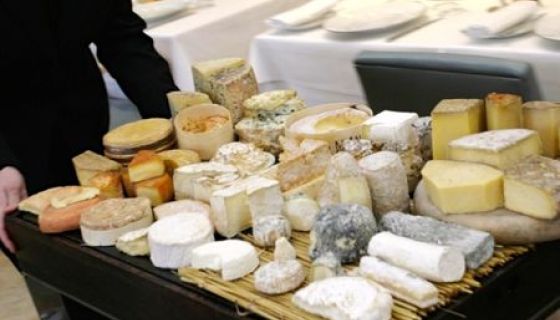A fascinating aspect of restaurants is how certain of them develop a patina with age, a series of attractions over and above the food, wine and hospitality they provide.
I had two chances recently to appreciate that of Orrery, now in its 17th year at the northern end of Marylebone High Street, London W1.
Sunlight poured in through the arched windows across the dining room during my first visit for a late-summer dinner. The sun’s rays picked up the silhouette of the glassware, flowers and napkins on the tables and projected them as a pattern onto the banquettes, a light show that would have delighted the restaurant’s original designer, Sir Terence Conran.
Later on, the mirrors above the banquette reflected the strong images of those at two tables behind me smiling with anticipation at the sight initially of the tournedos Rossini, the classic, rich dish of beef fillet, foie gras and black truffle being served to them and then as the restaurant’s enormous cheese trolley was wheeled towards them.
I arrived back for their set-price lunch menu (£27.50 for three courses) in pouring rain, joining five businessmen under the restaurant’s canopy as we all strove to empty our umbrellas of surplus water. They then proceeded to a lunch in the restaurant’s private dining room.
Orrery has established these different roles as it has also played a significant part in the transformation of a street that today, perhaps more compactly than any other, provides a snapshot into quite what an exciting city London currently is.
Twenty years ago this area was very different, occupied predominantly by charity shops. Then the Howard De Walden Estate, long-term freeholders of the 94 acres that encompasses this street, took a series of exemplary commercial and curatorial decisions: to invite Conran into the building at the northern end (a Conran shop is below Orrery) and the supermarket Waitrose into the middle. Having established these boundaries, they then proceeded over time to fill in the adjacent spaces with exciting independent cafes and restaurants.
Three long-time favourites are New Zealander Peter Gordon’s continually bustling Providores and, just round the corner on Moxon Street, Patricia Michaelson’s La Fromagerie next to Tim Wilson’s original butcher’s shop, The Ginger Pig. This street also saw the first outposts of Le Pain Quotidien and The Natural Kitchen. More recently, a branch of the increasingly ubiquitous Côte has opened just round the corner on Devonshire Street where the late Peter Langan’s influential Odin’s used to be and Chris Corbin and Jeremy King have opened Fischer’s, an Austrian-inspired café. Covetous eyes must hover over the rather anodyne Getti’s, which still occupies the street’s very best location, on a south-east-facing corner with plenty of outdoor seating.
These more informal cafes prosper because they appeal to the very varied local inhabitants, those who work nearby, shoppers, those who use the range of medical services close by and those for whom the transport interchanges at Baker Street and Marylebone are so convenient.
But in the renaissance of this street, the appeal of Orrery lies in its contrast to all this. It has no street presence, although it did open a small café and epicerie next door a decade ago. It occupies a narrow corridor-like space (the building housed stables centuries ago) with tables on either side that lead at the far end of the dining room to a set of steps and a passageway to the kitchen, from which the waiters troop with laden trays. It is smart and still today indefatigably French.
It is the kind of French restaurant that no one would open today, not just because of its rather formal style but also because of its high fixed-labour costs. And yet, because of what must be a favourable lease signed in the mid 1990s and the buying power of D&D restaurants that took over Conran restaurants, the menu prices are extremely good value. The copious dinner menus range from £30 per head to the tasting menu with the obviously popular tournedos Rossini at £60.
The self-assured cooking style of Igor Tymchyshyn, who has been Head Chef here for the past six years, was exemplified in a series of contrasting dishes. A rich shellfish bisque with a seafood raviolo; a grilled quail with a punchy ‘sauce diable’; a comforting vegetable risotto topped with a generous amount of summer truffles; and a more intricate rendition of a fillet of Dorset sea bass enveloped in a light ‘agrume’ coating of limes, oranges and lemons. Fruit also gets due prominence among the desserts, especially in a fine combination of meringue and particularly aromatic gariguette strawberries.
There is an enterprising wine list, too, with Italian sommelier Lorenzo Abussi particularly proud of the more expensive wines he is offering by the glass using the Coravin system. And the sweet Muscat de St-Jean-de-Minervois from the Languedoc on offer at £8 a glass is a steal. My major quibble is that while I would not want the principles of French cooking to change, I do think that here, as in so many French restaurants, the rigid French service rules need to relax.
That aside, Orrery stands as a testament to good design and good cooking. And as an example of how one restaurant can so significantly transform a street.
Orrery 55 Marylebone High Street, London W1U 5RB; tel +44 (0)20-7616 8000














